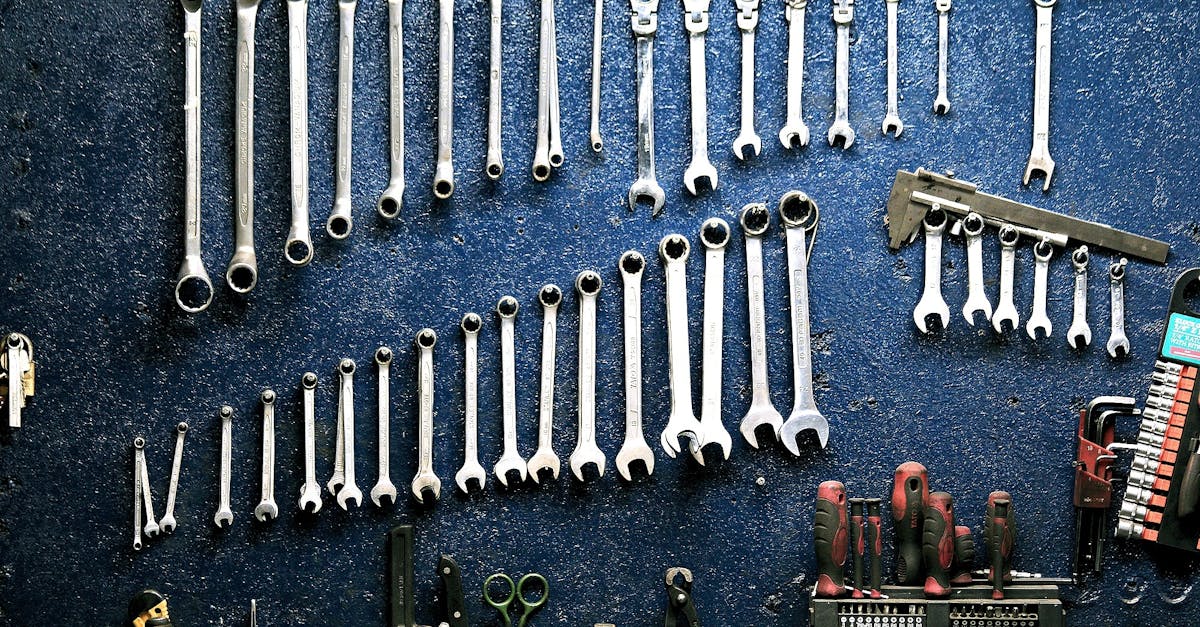
Imagine knowing exactly when your car needs service before any issues arise. That’s the magic of predictive maintenance. You can keep your vehicle running smoothly without spending a fortune. By using technology and data, you anticipate problems before they happen, which saves both time and money.
AI in auto repair and machine learning diagnostics are changing how you care for your car. You can now rely on systems that monitor your vehicle’s condition and provide insights using historical data. Avoid costly breakdowns by trusting smart maintenance systems that keep a watchful eye on everything from vibrations to oil quality. With these modern tools, maintaining your vehicle becomes both efficient and cost-effective.
Ready to unlock the secrets of keeping your car in top shape without breaking the bank? Dive into the article to discover how predictive maintenance can transform your auto care routine today!

In the article
- Understanding Predictive Maintenance
- Embracing Technology
- Maximizing Predictive Analytics
- Developing a Cost-Effective Plan
- Training and Skill Development
- Leveraging Auto Repair Technology
- Monitoring and Evaluation
- Innovative Practices
- Future of Predictive Maintenance
- Crafting a Long-Term Vision
- Developing Your Expertise
Understanding Predictive Maintenance
What It Means
When you hear about predictive maintenance, think about a way to prevent problems before they happen. It’s like knowing you need to wear a raincoat because you saw the weather forecast. This kind of maintenance relies on data and helps you plan repairs so that you avoid unexpected breakdowns. You use technology to understand when machines might fail and fix them before they do.
Importance for Cost Savings
You might wonder how predictive maintenance can save you money. Well, when you predict when a part will fail, you can plan repairs and avoid the high costs of emergency fixes. It’s like when you go to the doctor for regular check-ups instead of waiting to get sick. By using predictive maintenance, you can also improve efficiency by ensuring that your equipment is always ready to go. This means less downtime for your machines, which saves you time and money.
Key Elements
So, what do you need for predictive maintenance? First, focus on data collection. You need data to understand the condition of your machines. Think of data as the clues you gather to solve a mystery. Next, use advanced analytics tools. These tools help you make sense of all the data and find patterns. Lastly, use predictive models, which are like guidelines, to help you predict when your machines might need maintenance.

Photo provided by Los Muertos Crew on Pexels
Embracing Technology
There’s a whole world of new technology out there for maintenance. These technologies can make your work easier and more efficient. Let’s look at some of the tools you can use:
- AI in auto repair
- machine learning diagnostics
- Smart maintenance systems
It’s important to adopt best practices in tech to make the most of these tools. But how do AI and machine learning help? They improve diagnostics accuracy. This means you can find out what’s wrong with something more precisely and quickly.
Role of AI and Machine Learning
With AI and machine learning, you can streamline repair processes. These technologies sort through huge amounts of data to find patterns. It’s like having a super-smart assistant who guides you through tasks. Machine learning diagnostics help identify issues before they cause trouble.
Smart Systems for Efficiency
Integrating smart tools into your maintenance processes is key. These systems boost your efficiency by automating routine tasks, allowing you to focus on more critical work. To achieve this, maintain system coherence, which means making sure everything works well together like a well-oiled machine.
Keeping Up with Trends
Trends in technology change fast, so it’s crucial to stay updated. Implement cutting-edge solutions to keep your maintenance strategies up to date. If you adapt quickly to changes, you can stay ahead of the competition and make your processes more effective.

Maximizing Predictive Analytics
Predictive Analytics for Cars
Predictive analytics is a powerful tool for cars. It helps you use data-driven insights to understand how well your vehicle is performing. This way, you can optimize vehicle performance and make sure your car runs smoothly. It’s like tuning a musical instrument so that every note is perfect.
Strategies for Data Utilization
Data is at the heart of predictive maintenance. To make the most of it, you need to collect and process data effectively. Leverage this data for insights that can anticipate maintenance issues before they become serious problems. By doing so, you can manage your equipment more efficiently and prevent unexpected breakdowns.

Photo provided by Lex Photography on Pexels
Developing a Cost-Effective Plan
When it comes to predictive maintenance, creating affordable strategies is essential. You don’t want to spend more than you need to.
Budget Considerations
Start by analyzing costs effectively. This means understanding where your money is going and finding ways to save. Allocate resources wisely, focusing on areas that offer the best return on investment. Remember, you don’t need to spend a lot to achieve significant improvements.
Investment in Key Technologies
Once you have a handle on your budget, focus your spending on valuable tech. These technologies should provide real benefits and solve specific problems. Plan long-term investments to ensure that your strategies remain sustainable and continue to deliver results.
Measuring ROI
It’s important to know if your investments are paying off. Track investment returns carefully. Identify profitability indicators that show success, such as reduced downtime or improved equipment performance. This information will help you make informed decisions about future investments.

Training and Skill Development
Enhancing maintenance skills is crucial for unlocking the full potential of predictive maintenance. This involves regular training and knowledge sharing.
Training Programs
Implement comprehensive training programs to develop employee skills. These programs should focus on future-readiness, ensuring that your team can handle new technology and techniques. By keeping your team updated, you prepare them for any challenges they might face.
Knowledge Sharing
Promote collaborative learning by encouraging your team to share experiences and insights. This helps foster an innovation culture where everyone contributes ideas. By working together, you can solve problems more effectively and find new ways to improve.

Photo provided by Tima Miroshnichenko on Pexels
Leveraging Auto Repair Technology
Technology plays a significant role in improving auto repair processes, making them faster and more efficient.
Advanced Repair Techniques
Apply innovative methods in your repair processes. Ensure high-quality repairs by using the latest tools and techniques. This can increase reliability and safety, helping you avoid repeat repairs or potential hazards.
Technology Integration
Seamlessly integrate new technologies into your workflows. This means enhancing operational workflows and optimizing repair operations. A smooth integration ensures that everything runs like clockwork, minimizing disruptions and maximizing productivity.

Monitoring and Evaluation
Tracking Outcomes
Assessing predictive maintenance results helps you understand how well your strategies are working. Identify areas for enhancement by reviewing maintenance records. Make informed decisions based on this data. You can see what works and what needs improvement, guiding your future steps.
Tools for Evaluation
Utilize robust assessment tools to analyze your maintenance data. By doing this, you can implement necessary adjustments to enhance performance. Keep an eye on your progress, and don’t be afraid to make changes as needed to stay on track.

Photo provided by Anete Lusina on Pexels
Innovative Practices
Exploring New Approaches
Encourage creative problem-solving by exploring new approaches to maintenance. Innovation can lead to breakthroughs that make your processes more efficient and effective.

Photo provided by Tima Miroshnichenko on Pexels
Future of Predictive Maintenance
Adapting to Industry Changes
As the industry evolves, you must prepare for future challenges. This means staying informed and ready to adapt. By keeping an eye on changes, you can ensure your strategies remain relevant and effective.

Photo provided by Tima Miroshnichenko on Pexels
Crafting a Long-Term Vision
Setting Predictive Goals
Define clear maintenance objectives that align with future trends. This helps guide your efforts and ensures you’re always moving in the right direction. By having a clear vision, you can make targeted decisions that drive success.
Planning for Sustainable Success
To secure long-term growth, focus on sustainable practices. Build a future-ready strategy that accounts for changes in the industry and technology. This approach not only strengthens your current processes but also prepares you for future challenges.
Creating a Resilient Framework
Develop robust systems that ensure adaptability and flexibility. A resilient framework can withstand changes and keep your operations running smoothly, no matter what challenges arise.
Collaborative Innovation
Engage with industry partners to foster joint innovation efforts. By collaborating, you can leverage shared knowledge and resources, pushing the boundaries of what you can achieve together.

Photo provided by Artem Podrez on Pexels
Developing Your Expertise
Continuous Learning
Embrace ongoing education as a critical component of your strategy. By staying informed, you can keep up with new developments and ensure that your skills remain sharp.
Building Your Network
Building a strong network of industry contacts can open doors to new opportunities and insights. By connecting with others, you can broaden your understanding and find new ways to improve your processes.
Sharing Expertise
Contribute to industry knowledge by sharing your expertise. This can help you establish yourself as a thought leader and keep you engaged with the latest trends and innovations. Your contributions to industry knowledge will not only enhance your reputation but also help others grow and learn.
Wrapping Up on Smart Maintenance Success
By embracing modern tools like AI and machine learning, you gain smarter, more efficient ways to keep your vehicle running smoothly. The benefits are clear: fewer unexpected repairs, better safety, and cost savings over time. Moreover, with real-time data and predictive insights, you stay a step ahead, ensuring reliability and peace of mind.
To get started, assess your current maintenance practices. Identify where you can integrate smart technologies to enhance your vehicle’s upkeep. Consider investing in tools that offer predictive insights and begin tracking real-time data to monitor your car’s condition. These simple changes can lead to significant improvements in maintenance quality.
Now’s the time to take action. Begin your journey towards smarter maintenance by exploring options that fit your budget and needs. Stay proactive, and you’ll drive with confidence, knowing you’re prepared for what lies ahead. Let’s make smart maintenance your new standard!
